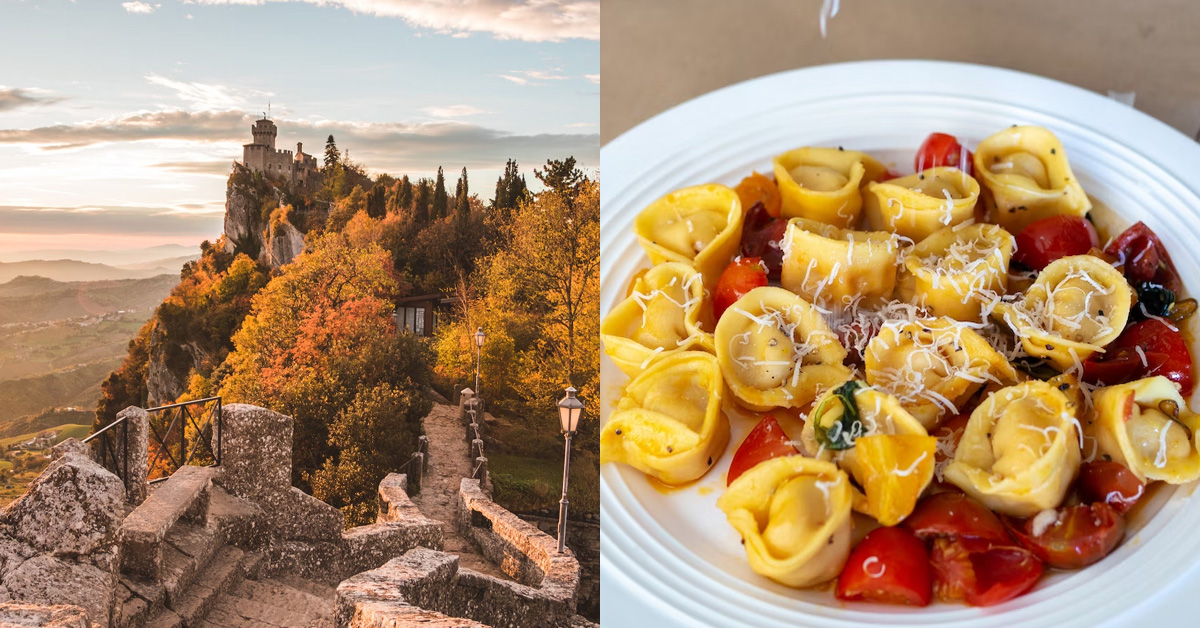San Marino, a small country located in the heart of Italy, is known for its rich history, stunning landscapes, and delicious cuisine.
Sammarinese food is a unique blend of Italian and Mediterranean flavors, with a focus on fresh, locally sourced ingredients. From hearty pasta dishes to savory meat dishes, Sammarinese cuisine is sure to tantalize your taste buds.
Sammarinese cuisine halal or not?
Is Sammarinese food halal?
San Marino is a predominantly Catholic country and its cuisine is heavily influenced by Italian cuisine. While some dishes may be halal, such as vegetarian pasta dishes or salads, many traditional dishes contain pork or other non-halal ingredients.
It is recommended to check with the restaurant or chef before consuming any food in San Marino to ensure it is halal.
What kind of food do Sammarinese eat?
The cuisine of San Marino is heavily influenced by Italian cuisine, with a focus on fresh, locally sourced ingredients. Some popular dishes include:
- Piadina – a type of flatbread filled with cheese, cured meats, and vegetables
- Torta Tre Monti – a layered cake made with chocolate and hazelnuts
- Cappelletti – small pasta filled with meat or cheese and served in a broth
- Polenta – a dish made from boiled cornmeal, often served with meat or cheese
- Rabbit stew – a traditional dish made with rabbit, vegetables, and herbs
- Grilled meats – including beef, pork, and lamb, often served with roasted vegetables or potatoes
- Seafood – San Marino is located near the Adriatic Sea, so seafood dishes such as grilled fish and seafood risotto are also popular.
How can you tell if the food is halal in San Marino?
You can look for halal certification logos or ask the restaurant staff if their food is halal. You can also check online reviews or ask for recommendations from the local Muslim community.
Is it hard to find halal food in San Marino?
San Marino is a small country, and it may be challenging to find halal food options. However, some restaurants may offer halal food, and it is recommended to inquire with the restaurant beforehand. There may be halal grocery stores or markets in nearby cities.
Is Sammarinese food healthy?
Sanmarinese cuisine is generally considered healthy as it is based on fresh and locally sourced ingredients such as vegetables, fruits, fish, and lean meats. The cuisine is also low in fat and sugar, and often includes whole grains.
However, like any cuisine, it can also include dishes that are high in calories, salt, and unhealthy fats. It is important to balance the intake of different types of food and to consume them in moderation.
What is Sammarinese food similar to?
Sammarinese food is similar to Italian cuisine, as San Marino is located within Italy and has been heavily influenced by Italian culture and cuisine.
However, Sammarinese cuisine also has some unique dishes and ingredients that set it apart from traditional Italian cuisine.
Steps to find halal food in San Marino
Here are some tips to find halal food in San Marino:
- Research halal restaurants in San Marino: Use search engines like Google or Yelp to find halal restaurants in San Marino. You can also check out halal food blogs or social media pages for recommendations.
- Check the menu: Once you have found a halal restaurant, check their menu to ensure that they serve halal food. Look for dishes that are labeled as halal or ask the staff for clarification.
- Ask for certification: If you are unsure about the halal status of a restaurant, ask the staff if they have halal certification from a recognized halal certification body.
- Look for halal symbols: Some halal restaurants display halal symbols or logos on their menus or storefronts. Look for these symbols to ensure that the food is halal.
- Ask for recommendations: If you know any Muslims or halal food enthusiasts in San Marino, ask them for recommendations on where to find halal food.
- Cook your own food: If you are unable to find halal restaurants in San Marino, consider cooking your own food using halal ingredients. You can find halal meat and other ingredients at halal grocery stores or online.

